- < Experiment 6
-
Experiment 7 v5
- Experiment 8 >
Investigating the angles of triangles
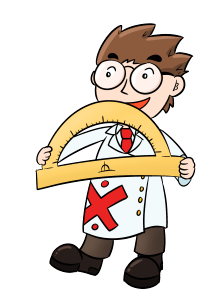
What can you discover about the angles inside a triangle?
Purpose
This experiment gives children an opportunity to practise measuring angles using a protractor.
The child will learn that the sum of the internal angles of a triangle is always 180 degrees.
You need to know
- how to measure angles using a protractor
- how to add two-digit and three-digit numbers
You will need

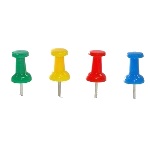

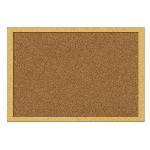




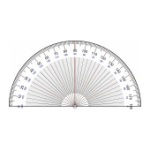
Steps
- Start with an empty cork board. If possible, lay it flat on a table. It should have at least 60 cm by 30 cm of space.
- Cut a piece of string or wool that is 106 cm long.
- Measure 3 cm from one end and make a mark on the string.
- Do the same with the other end.
- Tie the two ends of the string together to make a loop so that the two marks are touching. By doing this, you should end up with a 100 cm loop.
- Push two pins so that they are 40 cm apart near the bottom end of the board. Make sure to leave 10 cm space on the left side of the left pin and 10 cm on the right side of the right pin.
- Wrap the tied string around the two pins.
- Starting from your left, use the third pin to extend the loop to your left forming a straight line that is 50 cm long.
- Fill in the following table.
Location of the third pin Shape formed Angle 1 Angle 2 Angle 3 Sum (Angle 1 + Angle 1 + Angle 3) Exactly at Point 1 Line 180 degrees - - 180 degrees Above Point 2 Above Point 3 Above Point 4 Above Point 5 Above Point 6 Exactly at Point 7 Line 180 degrees - - 180 degrees -
Move the third pin so that it is directly above Point 2. Extend the loop as far as you can above Point 2 to create a triangle. Measure the angles and record the results.
- Move the third pin so that it is directly above Point 3 extending the loop to form another triangle. Measure the angles and record the results.
- Continue moving the third pin right until Point 7 in which a straight line is created just like in Step 8. Don't forget to measure and record angles.
- Fill out the rest of the above table by finding the sum of the angles of the triangles.
Hint
Follow the diagram below. Each point is 10 cm apart.
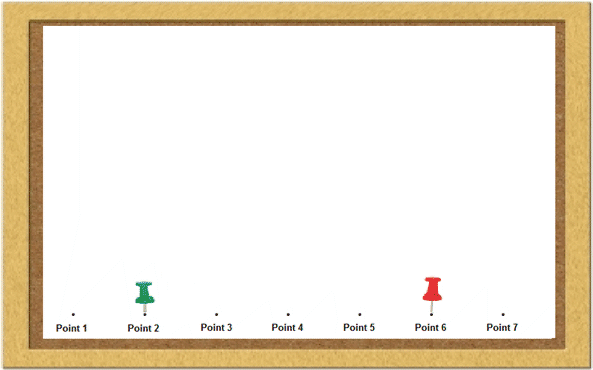
Hint
The three pins are now in a line.
Hint
If done right, one of angles should be a right angle or 90 degrees.
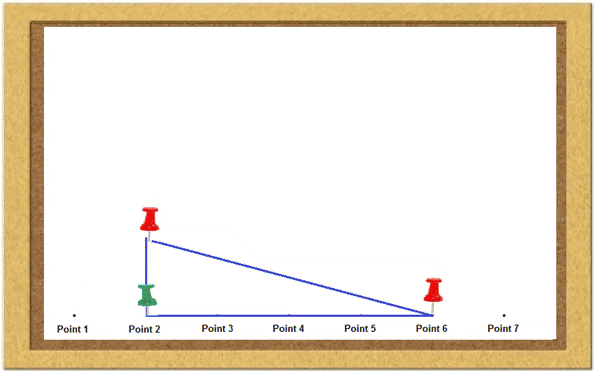
Hint
Again, one of the angles should be a right angle or 90 degrees.
Questions
- What pattern can you find in your results?
Expected answers
-
If angle measurements are precisely done, the sum of the internal angles of every triangle should be 180 degrees.
Explore further (optional)
Among the triangles, which one do you think has the largest surface area?
Using three more pins and a smaller loop of string, create a smaller triangle inside the each triangle. Make sure that the sides of the smaller triangles are parallel to the sides of the larger ones. Measure and find the sum of the angles of the smaller triangles. Was there any difference?
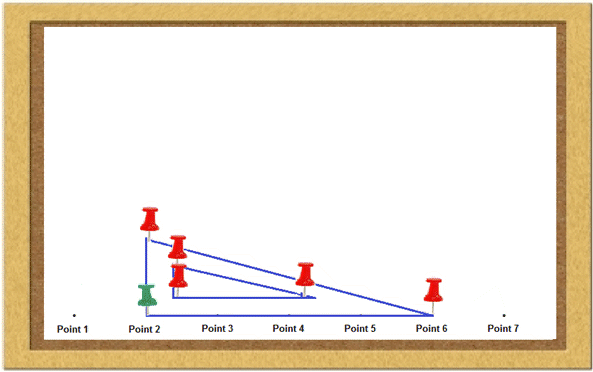
Rearrange the positions of the third pin so that it is positioned in between the points. Measure the angles and add the results. Are the sums different this time?
Tips for further exploration
Let the pupil do the experiment again, but this time ask the child to measure the area of the triangles using the formula Area = ½ W x H. The triangle formed when the third pin is above Point 3 should have the largest surface area.
The sum of the angles of the smaller triangles should still be 180 degrees.
The sums of the angles of the new triangles should still be 180 degrees.



